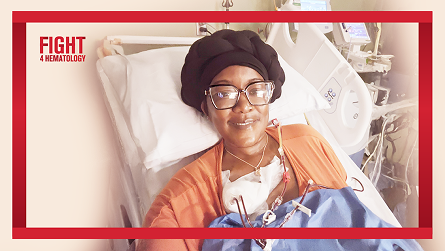Voices From the Frontlines
ASH is reaching out to patients, caregivers, clinicians, scientists, and other stakeholders dealing with blood diseases and disorders to learn about their experiences and shed light on the importance of federal programs that either support scientific research or provide access to health care. Here are their stories.
Read StoriesRESEARCHERS: SHARE YOUR IMPACT STORY
ASH MEMBERS SHED LIGHT ON IMPACT OF NIH CUTS
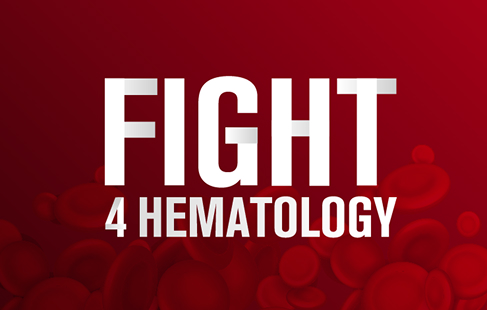
Research Saves Lives
Deep cuts at the National Institutes of Health (NIH) are poised to have a ripple effect on multiple fronts, including local economies, scientific research, the U.S. stature as a global leader, and, significantly, the lives of countless patients.
Explore the Stories
- Former NIH Researcher Who Studied Rare Diseases Now Battles One
- With Bone Marrow Transplant, Sickle Cell Warrior Embraces ‘Second Chance at Life’
- Fight With Rare Blood Disease Turns Patient Into Advocate
- In Battle Against Multiple Myeloma, Avid Cyclist Finds Research Outpaces Disease
- After Seeing Years of Progress in Treatments, Patient With Sickle Cell Disease Worries About Future
- For a Woman of Faith, Mixed-Match Bone Marrow Transplant Is an Answer to Prayers — and a Result of Research
- Sobering Diagnosis Comes Crashing Ashore
- A Pediatric Pioneer Says Research and Science Saved Her Life
- NIH Pulls Funds, Putting Program’s Future in Question
- Living With Sickle Cell Disease, Researcher Finds a Lifeline in Medicaid
- A Holiday Diagnosis Upends a Young Man’s World
Former NIH Researcher Who Studied Rare Diseases Now Battles One
For three decades, William “Bill” Pavan, PhD, worked at the National Institutes of Health (NIH), studying the genetics behind rare diseases. Today, he’s battling one.
In 2021 when he was 58, Dr. Pavan was diagnosed with myelodysplastic syndrome (MDS) with refractory anemia with ring sideroblasts associated with thrombocytosis (RARSt), a rare form of a rare group of blood disorders characterized by blood cells that don’t mature properly. His condition was complicated by a subsequent diagnosis of myelofibrosis, a kind of bone marrow cancer.
“Many people are living with cancer today because of drugs and procedures that were made possible through decades of NIH support endorsed by both political parties. We need to continue the pipeline of new cancer drugs and new interventions.”
William "Bill" Pavan, PhD
“This led to me being a candidate for a stem cell transplant,” Dr. Pavan said.
His medical journey interrupted a long and rewarding career at NIH, where he ran a large laboratory, unraveling the genetic basis of diseases, studying disease mechanisms, and exploring interventions and treatments. He retired in 2023 to focus on his treatment and recovery.
As a patient, he has experienced the benefits of NIH-supported research. The agency has dedicated programs to stem cell research, which have helped to expand bone marrow transplant as a treatment option for patients. Thanks to the development of new chemotherapy drugs and immunosuppressants, a perfect donor match is no longer necessary.
“My treatment used a relatively new approach that uses stem cells obtained from my [adult] son, who is only a 50% match for the 10 major antigens,” Dr. Pavan said of his transplant, which was performed at the Johns Hopkins Kimmel Cancer Center in Baltimore, Maryland.
As both a patient and former NIH researcher, Dr. Pavan said he is alarmed by the mass layoffs, withholding of research funds, and threatened cuts at NIH.
“It scares me, it devastates me, it makes me angry sometimes,” Dr. Pavan said of the actions. “Many people are living with cancer today because of drugs and procedures that were made possible through decades of NIH support endorsed by both political parties. We need to continue the pipeline of new cancer drugs and new interventions.”
Any disruptions to research funds will have lasting impacts, even if the money is restored, Dr. Pavan said: “It’s not just turning off and on a switch.” When funding for research is stopped, samples may have to be destroyed, researchers may look for opportunities elsewhere, and the quest for new treatments is, at a minimum, stalled.
In cancer treatments, there is something known as the “lily pad strategy,” he said, which underscores the importance of robust and continuous research into new drugs and treatments.
“For many people living with cancer, they’re on a drug that’s keeping their cancer in check,” he said. “And it may only work for six months, or it may only work for a year, but the doctor says not to worry because there’s another drug in the pipeline that will be there when this drug no longer works. And they call it a lily pad approach, where they jump from lily pad to lily pad as they manage their diseases — and they can live a longer life because of it. These people are scared to death because this pipeline is disrupted.”
With Bone Marrow Transplant, Sickle Cell Warrior Embraces ‘Second Chance at Life’
Shortly before she turned 1, Christelle was diagnosed with sickle cell disease (SCD), an inherited blood disorder affecting an estimated 100,000 people in the U.S. The disease is characterized by misshapen red blood cells, which can block blood flow, leading to severe pain, infection, and damage to organs.
It wasn’t until she reached adulthood that Christelle, an SCD advocate and aspiring physician-scientist, realized how much her childhood differed from the experiences of others. Going to the hospital, navigating pain caused by her SCD, and having to attend school while feeling unwell were just a part of her day-to-day life.
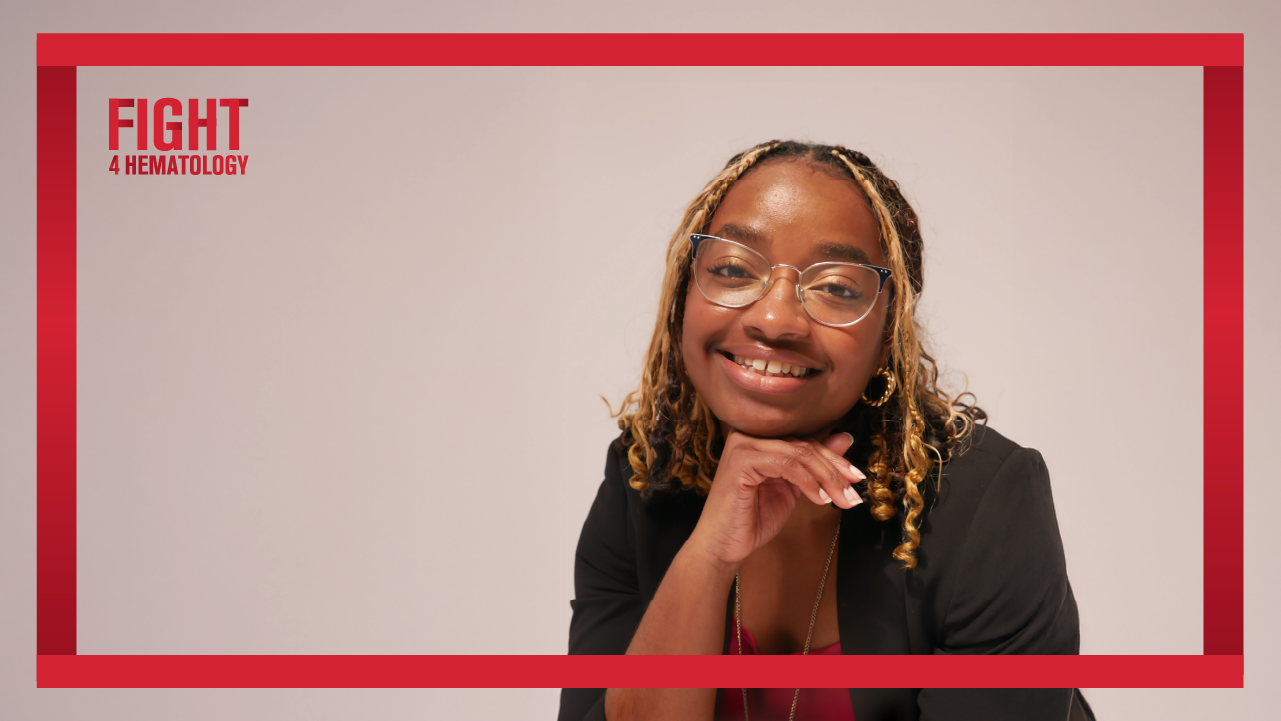
“I dream of a day when warriors get the care they deserve without having to fight for it.”
Christelle
However, once Christelle reached medical school, the symptoms that she had always been able to power through worsened. Months of intense pain culminated in a hospitalization and led her to pursue a curative bone marrow transplant in which abnormal cells in the bone marrow are cleared and replaced by healthy cells.
The path to transplant was not easy, and Christelle leaned on much of what she learned in medical school to research the procedure and advocate for her suitability as a candidate for transplant. She was able to receive a transplant in 2022, with her brother being a “perfect” donor match. The transplant completely changed her day-to-day life, ridding her of daily pain and making it possible for her to exercise. While she left medical school to focus on her recovery, Christelle is holding onto her dream to become a physician-scientist.
“It feels like a second chance at life,” she said of her successful transplant.
Christelle’s transplant was covered by Medi-Cal, which is California’s Medicaid program. Without it, she could not have afforded the transplant. Medi-Cal allowed her to focus on her health, rather than on how she was going to pay for treatment.
For nearly half of individuals living with SCD, Medicaid plays an essential role, enabling access to critical specialists and treatments. Many of these patients, like Christelle, experience unpredictable or frequent health crises that disrupt work and/or school.
Now, after transplant, Christelle has a new normal. She advocates for those living with SCD through her service on community advisory boards for both the ASH Research Collaborative and the University of California San Francisco’s Sickle Cell Center of Excellence.
“Because of my intersecting experiences as an SCD warrior and medical student, I am passionate about medical education about SCD and medical care delivery reform for SCD warriors,” Christelle shared on Instagram. “I dream of a day when warriors get the care they deserve without having to fight for it.”
Fight With Rare Blood Disease Turns Patient Into Advocate
Abnormal blood work from a 2014 annual checkup ultimately led to Linda, a career engineer in New Jersey, receiving a diagnosis of amyloid light-chain (AL) amyloidosis. This very rare disease causes the bone marrow plasma cells (a type of white blood cell) to create misshapen proteins that don’t break down properly and instead clump together, depositing in vital organs including the kidneys, liver, and heart.
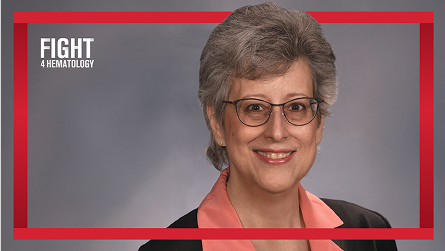
“AL amyloidosis is still considered an incredibly rare disease, but the research to date has enabled better diagnostic and treatment techniques. We need this research to continue.”
Linda
Although Linda’s doctors believed her to be an excellent candidate for bone marrow transplant in 2015, an effective therapy for the disease, Linda chose to forego the procedure given the process and risks involved. Instead, she pursued treatment with the new CyBorD chemotherapy regimen (cyclophosphamide, bortezomib, and dexamethasone), which put her into remission for five years.
“When I was diagnosed in 2014, the first outpatient treatment, CyBorD, had recently become available. Up until then, the gold standard of treatment was an autologous bone marrow transplant, so having outpatient chemotherapy was a big step forward.”
In 2020, Linda’s kidney function started to consistently drop, prompting her to choose the latest AL amyloidosis treatment: daratumumab and hyaluronidase-fihj, a new immunotherapy. Again, she went into full remission, where she has stayed since 2021.
“These treatments saved my life,” Linda saved.
Unfortunately, her kidney function could not be saved, and she went on peritoneal dialysis from December 2022 to July 2025, when she received a kidney transplant.
Without NIH’s support of basic and applied research on AL amyloidosis and the mechanisms of action underlying potential therapies, CyBorD and daratumumab and hyaluronidase-fihj may never have been developed, leaving Linda with fewer options to effectively treat her disease. Both of these treatments were only made available for AL amyloidosis relatively recently: CyBorD in 2012 and daratumumab and hyaluronidase-fihj in 2020. Cuts to NIH funding could significantly interrupt research into this rare and life-threatening disease.
Now, post-kidney transplant, Linda continues to be a fierce advocate for AL amyloidosis. Since 2019, she has shared her story with the next generation of physicians to raise awareness about it through the Amyloidosis Speakers Bureau, a part of Mackenzie’s Mission.
“AL amyloidosis is still considered an incredibly rare disease, but the research to date has enabled better diagnostic and treatment techniques,” she said. “We need this research to continue.”
In Battle Against Multiple Myeloma, Avid Cyclist Finds Research Outpaces Disease
In one sense, Maurice said his ongoing battle with multiple myeloma (MM) began long before he even knew he had a fight on his hands.
In 2010, Maurice, a longtime resident of Sacramento, California, was a 46-year-old active and athletic building automation systems engineer who suddenly found himself easily fatigued and fighting one infection after another. His diagnosis came as a shock. His subsequent (and ongoing) medical journey opened his eyes to a world he knew relatively little about.
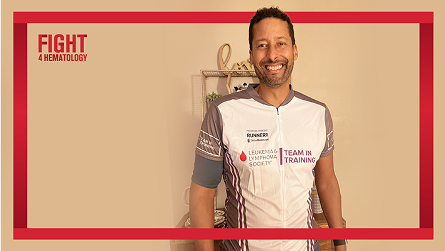
“Research money is needed to be able to stay ahead of a disease and eventually find things that are curative.”
Maurice
Maurice points to the work of researchers and doctors dedicated to developing better treatments for blood cancers — work that took a giant leap forward in 2001 when then-President George Bush addressed the nation to talk about the importance of stem cell research and committed to what he called “aggressive federal funding” in that area.
“My story really didn’t start in 2010,” Maurice said, referencing the year of his diagnosis. “I think my story started back when federal-funded research allowed adult stem cells to be studied en masse.”
That research, funded and supported by the National Institutes of Health, opened the door to chimeric antigen receptor (CAR) T-cell therapy — in which a patient’s own immune cells are genetically engineered in a laboratory to attack cancer cells — and advances in autologous bone marrow transplants, which use a patient’s own healthy stem cells to replace bone marrow that’s not working properly.
Maurice underwent those treatments, along with varying regimens of chemotherapy, as his doctors tried progressive approaches to fighting his MM. Most recently, in December 2024, he participated in a CAR T-cell therapy clinical trial at Stanford Health Care trial that targets both the B-cell maturation antigen (BCMA) and the G protein-coupled receptor class C group 5 member D (GPRC5D) proteins.
“During my cancer journey — and even before — in the background, there were advances,” Maurice said. “My wife put it this way: ‘The research outpaced my disease.’ ”
Maurice’s appreciation for scientific research has only grown. Both he and his wife have participated in bicycle charity rides to raise money for blood cancer research — and it alarms him to see federal funding for such research on the chopping block.
“Research money is needed to be able to stay ahead of a disease and eventually find things that are curative,” Maurice said. “One of the most encouraging things you can hear as a cancer patient is your doctor saying, 'OK, we have something to deal with that.' Without the funding, the conversation is much different."
Maurice expects to have more conversations with his doctors. In July, he learned that he had developed secondary acute myeloid leukemia. After an intense round of induction chemotherapy and ongoing maintenance chemotherapy, he is waiting on a bone marrow transplant donor.
Maurice compared his outlook today to the principle of marginal gains, which is often referenced in multistage cycling competitions.
“That’s kind of how I look at this whole journey that I’m on,” he said. “It’s an endurance event for me, and I want marginal gains while I’m in it.”
After Seeing Years of Progress in Treatments, Patient With Sickle Cell Disease Worries About Future
As a baby, Erica's tears and cries of pain alerted her parents that something was very wrong. Their search for answers resulted in multiple visits to different doctors. The answer came when Erica was 2. “They tested me for everything and that’s when they discovered I have sickle cell anemia, and it’s the very severe kind.” Erica was diagnosed with hemoglobin SS, which means most, if not all, of her hemoglobin is abnormal, resulting in significant pain, chronic anemia, and strokes. “It’s been a challenge,” said Erica.
“It has taken years to get even this far with treatments for sickle cell disease. And now, it's like we don't know what we'll face tomorrow.”
Erica
The severity of her condition meant Erica often missed school while growing up, and she has faced frequent hospitalizations throughout her childhood and into adulthood. While she graduated college with a Bachelor of Science degree in biology, Erica has not been able to pursue a full-time career because of her health challenges. For Erica and other SCD patients in similar situations, anticipated Medicaid work requirements are a concern.
Erica, the mother of a teenage daughter, relies on Medicaid for her access to care, which includes a regimen of 12 pills in the morning and four at night. She also undergoes apheresis, an automated red blood cell exchange, every three to four weeks. “If it wasn’t for Medicaid, I wouldn’t be able to afford the treatment. Medicaid is very important to me, as well as others like me. We have to have it to live.”
Erica is also unnerved by the cuts at the National Institutes of Health, which has funded research into a host of blood diseases and disorders, including SCD.
“Honestly, I'm afraid. I'm scared,” she said. “It has taken years to get even this far with treatments for sickle cell disease. And now it's like we don't know what we'll face tomorrow.”
For a Woman of Faith, Mixed-Match Bone Marrow Transplant Is an Answer to Prayers — and a Result of Research
In September 2017, Debra was busy. A social worker with the state of Delaware, she was running a unit within her department, active in alumni and community organizations, and living a full life with her husband and three adult children. So, it wasn’t too alarming when she started to feel a bit tired. But then the fatigue got extreme: “I’d walk down the hall and feel winded.”
A few days before she was to leave for a conference in Florida, Debra visited a walk-in clinic, thinking she might get a prescription and travel as planned. But after taking blood samples, the doctor told Debra that she was seriously ill — saying the results showed low counts for her blood cells and platelets. An ambulance was called to take her to the hospital immediately.
“The science around transplant itself, the understanding of genetics, all these things and more led to me having the option to receive a transplant, especially when the immunosuppressant therapy route failed. My prayers for recovery were answered.”
Debra
A few days later and after a flurry of additional blood tests, Debra received a diagnosis of severe aplastic anemia, a rare and serious disorder in which the bone marrow does not make enough red blood cells, which transport oxygen through the body, white blood cells, which fight infections, and platelets, which are crucial for clotting. Her medical treatment began with blood transfusions and immunosuppressants, along with the use of eltrombopag, which increases the production of platelets. While there was initial improvement, by early 2019 Debra’s blood levels were showing signs of trouble. A bone marrow biopsy confirmed that she had relapsed. After discussions with her doctor and family, Debra opted for a bone marrow transplant, which involves infusing healthy blood-forming stem cells to replace diseased bone marrow.
Moving forward with a transplant had its own challenges. An unrelated surgery and recovery delayed things, and the search for a donor was daunting. (Debra was adopted as an infant and had no biological siblings that she knew of, and her antibodies against her adult children’s antigens ruled them out as possible donors. Individuals of color have less success in finding non-biological matching donors.)
A mixed-match unrelated donor (a female from Germany) was identified, and in May 2020, Debra had her bone marrow transplant at Johns Hopkins Hospital in Baltimore, where she spent the subsequent three months getting her post-transplant treatment. She went home two days before her birthday in late July, fighting her way through a long recovery marked by nausea, fatigue, and other health challenges.
Debra, who is doing well today, attributes her success with the transplant to prayer and the research that preceded her case. The National Institutes of Health has long been a leader in funding research into bone marrow transplants, including those involving mixed-matched donors.
“The science around transplant itself, the understanding of genetics, all these things and more led to me having the option to receive a transplant, especially when the immunosuppressant therapy route failed,” she said. “My prayers for recovery were answered. I’m a recipient of that science and the work of skilled trained medical professionals. I’m five years post-transplant because people did work years before I arrived.”
Sobering Diagnosis Comes Crashing Ashore
For most people, a fractured neck would hardly qualify as a lucky break. For Michael Riotto, it may well have saved his life.
In the summer of 2011, Michael, then 51, was bodysurfing waves with his 13-year-old son on the Jersey Shore when one wave slammed him to the ground. Still sore the next day, he went to the local hospital where he learned he had fractured his neck. The CT scan also revealed something else — that his bones, in the words of the attending physician, were “moth-eaten.” The doctor sent him that same night to a larger hospital in Philadelphia where more tests, scans, and a bone marrow biopsy resulted in a sobering diagnosis: multiple myeloma (MM), an incurable blood cancer that develops in plasma cells in the bone marrow.
“The research that goes into all these different drugs is really, really critical to people’s survival.”
Michael Riotto
Specifically, he was in stage III of the disease, and pamphlets shared with him and his wife that night forecast a life expectancy of no more than five years. “Mind you, I had no symptoms leading up to that fracture on the beach,” Michael recalled, noting he had a demanding career as a manager of a large department store. “No fatigue, no bone pain, no aches in my back, no anemia, none of the typical symptoms.”
Were it not for his fractured neck, Michael’s MM might not have been detected until it advanced even further. With his diagnosis, Michael began chemotherapy. Within a few months, Michael’s hematologist recommended an autologous stem cell transplant, a procedure in which a patient’s healthy stems cells are collected, stored, and infused back into the patient after treatment to replace faulty bone marrow. The National Institutes of Health (NIH) has long been a leader in funding research into stem cell transplantation, a key treatment in fighting blood cancers. MM is not (yet) curable and ongoing research includes looking at how to improve immunotherapies, such as chimeric antigen receptor (CAR) T-cell therapy, and drugs that modify the immune system.
Michael had the procedure a few days after Christmas. After about 24 days in the hospital (due largely to a serious infection), Michael returned home to recover and continue with maintenance treatment, specifically with lenalidomide, a drug that helps the immune system. He continued it until the end of 2019, when his doctor advised a break because Michael had contracted the flu. When tests showed that Michael’s MM remained at bay during his initial break from lenalidomide, his doctor extended the break several more times.
It's been six years since Michael has been on any drug for his MM. He has blood work every quarter, scans at least once a year, and regular visits with his hematologist. Michael still deals with pain and irreversible damage to his bones, but he says he is in the best shape of his life. He is grateful this his stem cell transplant has given him more time with his wife, son, and daughter. His own experience has led him to become a patient advocate, and he is now a regular visitor to Capitol Hill where he speaks about the importance of federal investment in scientific research and support for health care programs.
Michael said he’s alarmed by the cuts at NIH: “The research that goes into all these different drugs is really, really critical to people’s survival.”
Michael said he believes it’s simply a matter of time before his remission ends, and he’s already discussed with his doctor what treatments might be appropriate when that happens. He thinks some form of CAR T-cell therapy would be likely, and he has followed with interest research developments on that front.
Michael said that one of his doctors told him that federal cuts to scientific research may discourage scientists from pursuing their studies.
“He said, ‘People dedicate years, or even their entire lives, to a certain project. The funding may be here now, but will it be here next year?’ As a patient, that’s really scary.”
A Pediatric Pioneer Says Research and Science Saved Her Life
One night in 2010 when she was 5, Emily was taking a bath at home when her mother noticed a multitude of bruises on her body — including 21 on her legs alone. That night, she woke up screaming in pain, and her parents took her to the emergency room. In short order, she was diagnosed with B-cell acute lymphoblastic leukemia (B-ALL), a type of cancer of the blood and bone marrow, and began chemotherapy.
“After three relapses and 22 months of failed chemotherapy, they told my parents that it was time to take me home for hospice care,” Emily said. But her parents refused to give up, instead taking Emily to the Children’s Hospital of Philadelphia just as a clinical trial for chimeric antigen receptor (CAR) T-cell therapy was to begin. CAR T-cell therapy — developed in part with research funding from the National Institutes of Health — is a type of immunotherapy in which a patient’s T cells are genetically modified to fight cancer cells.

“Without the research, funding, and science that went into making CAR T-cell therapy, I wouldn't be here today.”
Emily Whitehead
Emily became the first child with B-ALL to receive CAR T-cell therapy. With the therapy, her immune system was “trained to eliminate my cancer,” Emily said. With the dosage for pediatric patients far from perfected, Emily wound up in a 14-day coma because the treatment was so taxing on her body. However, she pulled through.
Today, Emily is considered cured and is a student at the University of Pennsylvania where she studies English, creative writing, and photography. She is also the co-founder of the Emily Whitehead Foundation, which seeks to raise awareness about less toxic treatment options, such as CAR-T, for childhood cancers.
“Without the research, funding, and science that went into making CAR T-cell therapy, I wouldn't be here today,” Emily said. “It is so important to support scientific research and federal health programs to create new treatments like CAR-T, which mean spending less time in the hospital and have little-to-no side effects post-treatment."
Emily also knows firsthand the importance of access to health care and how programs such as Medicaid can make a crucial difference in whether patients get the care they need.
“I have depended on Medicaid throughout my treatment,” she said. “One of the only side effects from CAR-T was immunosuppression, which I continue receiving infusions for and which are covered by Medicaid. The planned cuts to the program mean that I, and millions of others, could lose access to life-saving treatments and medications.”
NIH Pulls Funds, Putting Program’s Future in Question
For all of her professional life, Charity Oyedeji, MD, an assistant professor at a leading academic medical center, has dedicated herself to studying sickle cell disease (SCD) and helping individuals who suffer from it. In people with SCD, the red blood cells become rigid and shaped like a sickle, impeding their ability to flow through the body – a condition which brings with it significant pain and a host of life-threatening complications.
Dr. Oyedeji wants to improve the physical agility and quality of life of people with SCD through personalized strategies to manage frailty. This past June, however, the National Institutes of Health (NIH) notified her that a grant supporting her Sickle Cell Disease Functional Assessment Validation and Refinement Study and the SickleFit Exercise Program was being terminated, claiming a “low return on investment” and alleging the study supported racial discrimination. (More than 90% of patients with SCD in the U.S. are non-Hispanic Black or African American.)
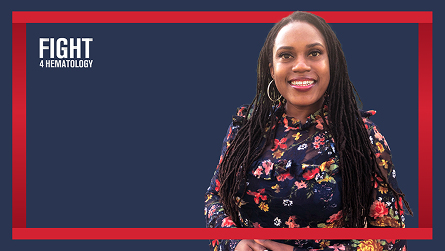
“I was in year two of a five-year grant. The funding was terminated, and we’re not even halfway through.”
Charity Oyedeji, MD
“I was in year two of a five-year grant,” Dr. Oyedeji said. “The funding was terminated, and we’re not even halfway through.” An earlier pilot study had helped to shed light on the importance of Dr. Oyedeji’s work.
“We found that people in their 50s actually were functioning more like people in their 70s and 80s,” Dr. Oyedeji said. “We know that physical activity is associated with longevity. People with SCD have a shorter lifespan by about 20 years, compared to Blacks in the general population. We really need a program focused on developing a lifestyle of exercise and building confidence — tailoring the exercise to each person’s impairment.”
The study and program were intended to accomplish two things: create sound assessment tools and develop interventions to reduce impairments and improve physical functionality.
All of that is now up in the air as Dr. Oyedeji searches for alternative sources of funding. Beyond the impact on her own work, Dr. Oyedeji said she worries that NIH cuts could have a chilling effect on researchers, perhaps prompting some to leave the field.
“A lot of researchers are scared, especially those from underrepresented backgrounds,” Dr. Oyedeji said. “Black and brown people are being targeted and they’re the most at risk of dropping out.”
Living With Sickle Cell Disease, Researcher Finds a Lifeline in Medicaid
Ronisha Edwards-Elliott, a researcher and advocate, was diagnosed with sickle cell disease (SCD) at birth through newborn screening. As a child, she depended on Medicaid to get access to the care she needed.
Once she turned 18, Ronisha lost her Medicaid coverage and went uninsured for two years. She did her best to manage her health on her own, but it wasn’t enough, as a severe pain crisis forced her into the emergency department and nearly cost her life. This experience pushed her to re-enroll in Medicaid. For the next five years, with reliable access to medications and specialists, her health stabilized and improved.
“I don’t know if I would still be alive if I hadn’t had access to Medicaid when I needed it.”
Ronisha Edwards-Elliott
Now, Ronisha leads research focused on improving the transition from pediatric to adult care for people with SCD. She helps adolescents understand their disease, the health care system, and how to advocate for themselves. Ronisha’s program was originally supported through funding connected to Medicaid, but with upcoming cuts, her current grant is set to expire at the end of 2025. Reductions to NIH research funding coupled with heightened scrutiny of issues related to health equity further threaten her program’s future.
Medicaid has played an essential role in Ronisha’s life and career as she works to improve the experiences of others living with the disease. Today, more than half of people living with SCD in the U.S. depend on Medicaid or the Children's Health Insurance Program for the care they need. Cuts to Medicaid not only threaten their health and well-being, but also programs such as Ronisha’s that help them better understand and manage their symptoms.
“Without access to insurance, SCD can not only be costly, but life-threatening,” Ronisha said.
A Holiday Diagnosis Upends a Young Man’s World
One week before Christmas 2023, Rohan, a resident of Mountain View, California, received a diagnosis that turned his world upside down: acute myeloid leukemia. He had been feeling rundown and fighting an ear infection, so he visited an urgent care center “because, you know, it’s Christmas and the holidays. No one wants to be sick.”
“Investing in research is not optional; it’s lifesaving.”
Rohan
Thirty minutes after he came home, the doctor at the urgent care center called and told him to go to Stanford Hospital immediately. His holidays were spent in the hospital. “I had to pause my career, put my social plans on hold, and learn to navigate a world of transplants, immunosuppression, and survival,” he said.
Following an emergency chemotherapy regimen, Rohan was initially in remission and on track for an allogeneic transplant. But his leukemia relapsed, and his intended donor fell ill. Rohan, who is Indian American, had a unique human leukocyte antigen (HLA) type, making it extremely hard to find another donor.
After consulting with his doctor, Rohan decided to undergo a double cord blood transplant. “I was given a novel combination of therapies pre-transplant, including FLAG-IDA with venetoclax, followed by an aggressive transplant strategy using double cord blood due to my racial background and being unable to find a donor,” Rohan said. “These approaches weren’t standard a decade ago. They represent real progress thanks to research.”
His treatment was not easy and there were complications, including graft-versus-host disease (in which the donor cells attack the recipient’s body), but Rohan is in remission and “regaining strength every day.” Rohan said he has a newfound appreciation for the role of scientific research, including the National Institutes of Health’s funding of basic research in areas such as stem cell transplantation.
“Investing in research is not optional; it’s lifesaving,” he said. “I’m alive today because of advances in stem cell transplants and targeted therapies. Federal programs that support patients, caregivers, and equitable access to care are the backbone of recovery. Every dollar toward science is a vote for survival, for hope, for the future.”
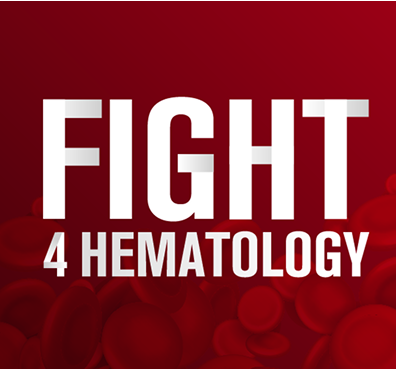
#Fight4Hematology
ASH has created the #Fight4Hematology Action Hub to keep you up to date on ASH's efforts and provide four easy ways you can get involved to protect the future of hematology research and advances in patient care. Together, we can drive meaningful change!
